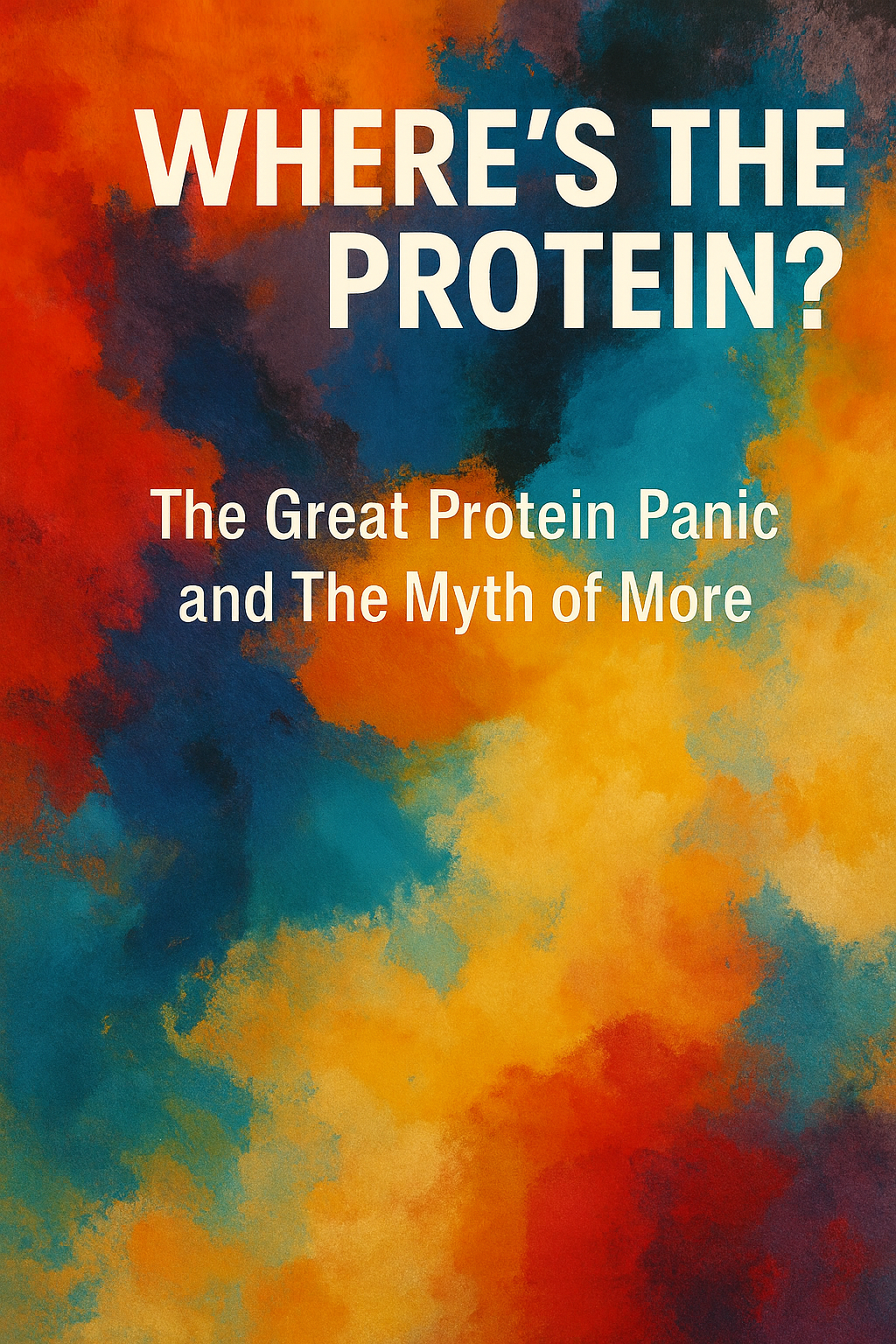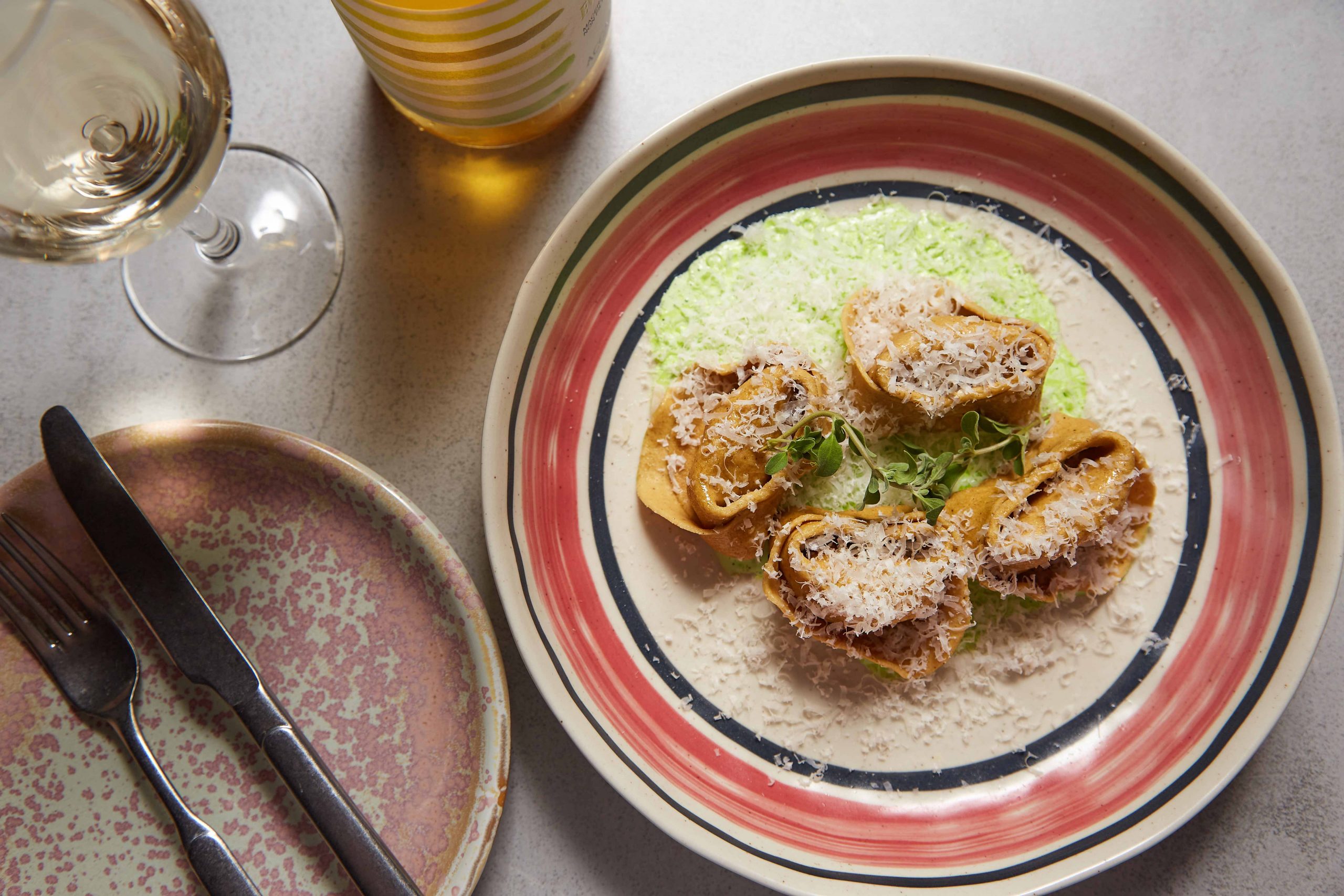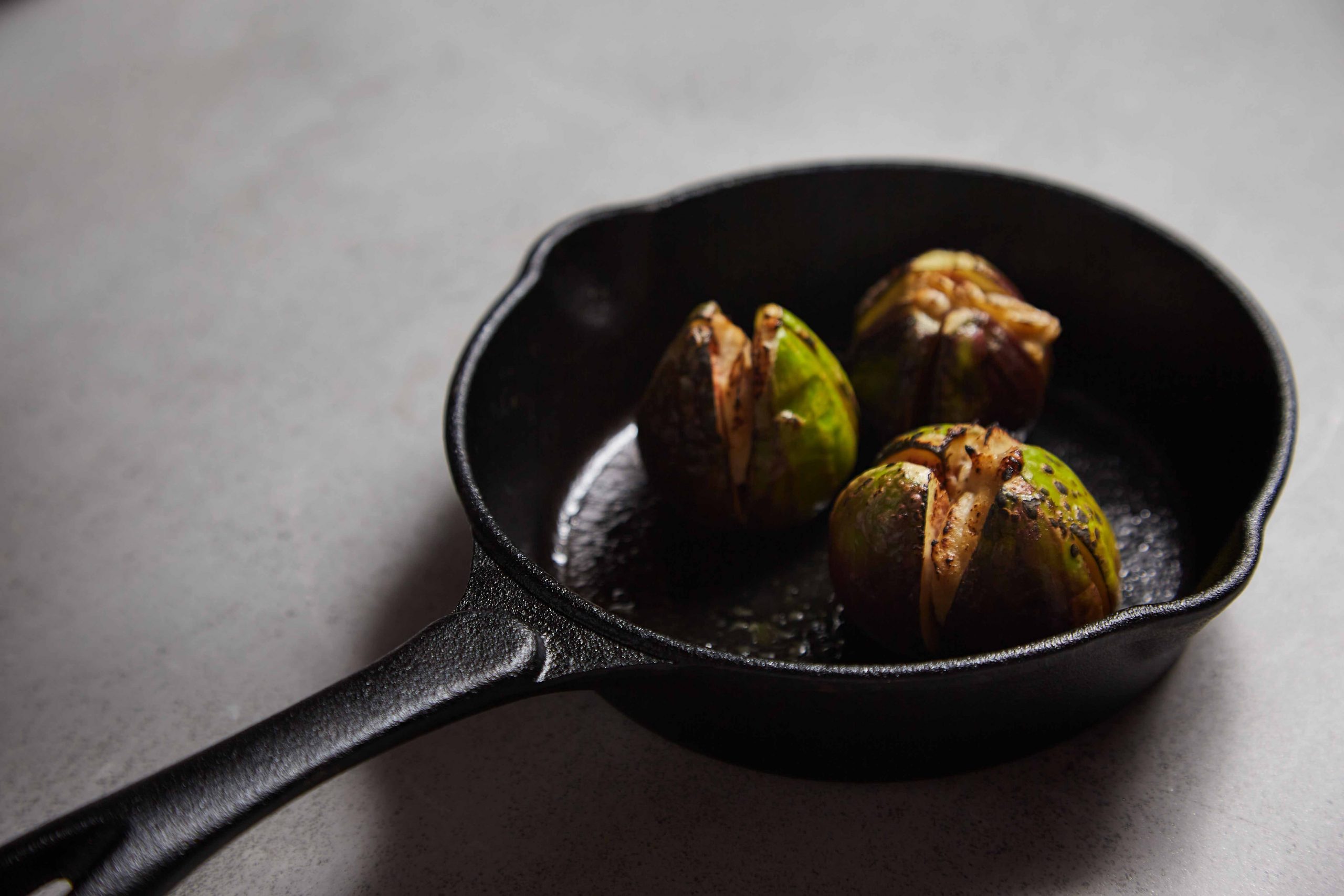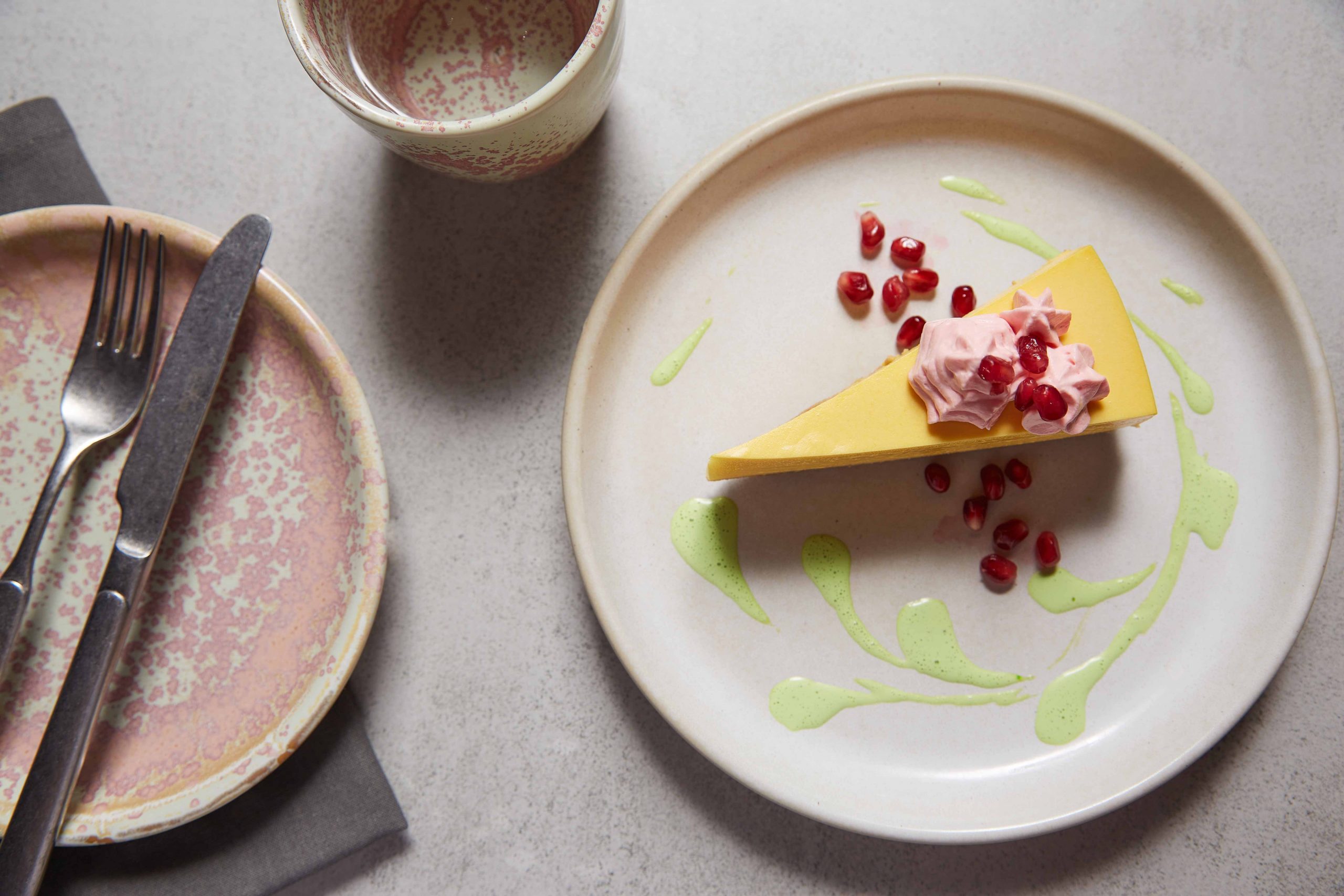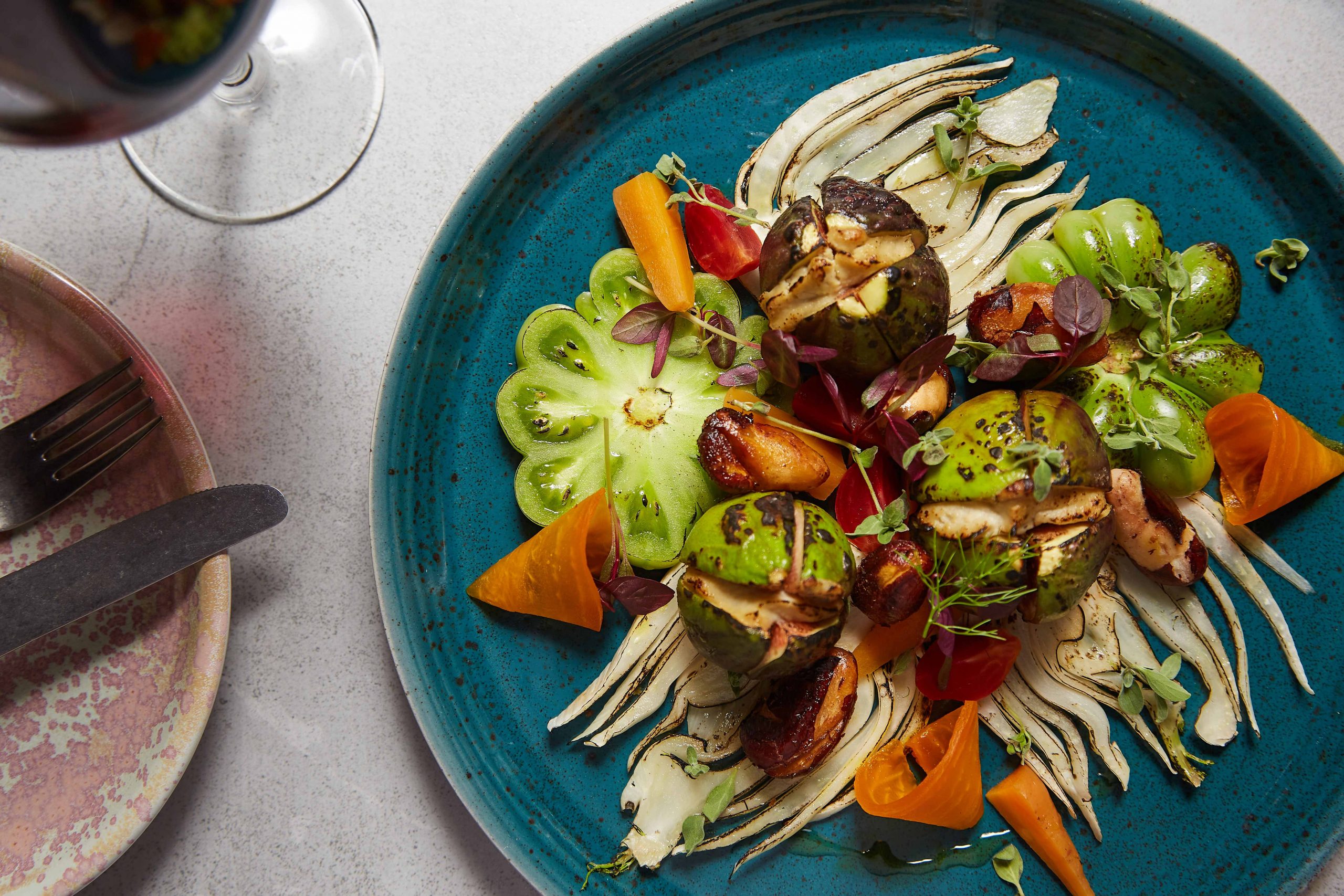WHERE’S THE PROTEIN?
Let’s talk about protein—everyone’s favourite buzzword. You can’t open a menu, scroll through TikTok, or pick up a bag of kale chips without someone shouting about protein content. Somewhere along the line, we collectively decided that protein must be visible—preferably as a grey-brown rectangle with artificial grill marks printed on it.
At Olivera Kitchen, we’re here to challenge that. Protein isn’t supposed to be a block. It shouldn’t squeak when you cut it. Moreover, it definitely shouldn’t require a chemistry degree to understand what’s in it.
Why We Don’t Do Fake Meat
We don’t do fake meats. No “plant-based chicken,” no “soy steak,” no “bleeding” burgers that owe their colour to the same additives used in breakfast cereal. Why? Because that’s not food—that’s industrial theatre.
The Great Protein Panic
Somewhere along the path to plant-based enlightenment, we lost the plot. Walk into most plant-based restaurants today and you’ll find menus dominated by ultra-processed meat substitutes—rubbery patties, artificial chicken strips, and mystery blocks that bear little resemblance to actual food.
People began to panic: “If it’s vegetarian, where’s the protein?!” Suddenly, everyone became an amateur nutritionist, counting grams and ratios as if the only way to survive dinner was to hit a magic protein quota.
The Invisible Protein Problem
I was genuinely puzzled the first time a guest looked at one of my dishes and asked, “Where is the protein?”
In reality, the plate was absolutely packed with it: a silky lentil mousse, a rich demi-glace made with 17 different root vegetables and legumes, along with nutritious trumpet mushrooms, and sautéed broad beans. Every element contributed protein—yet the diner couldn’t see it.
That moment revealed the problem: many people have a fixed idea of what protein looks like. Instead, they expect a hard, visible “chunk” of something—like meat, fish, or an artificial stand-in.
Consequently, it became a pattern. Guests wrote reviews claiming our dishes had “no protein,” even when we built the meal on protein-rich ingredients. This striking example shows how deeply this misconception has embedded itself in modern food culture.
Traditional Cuisines Never Needed Fake Meat
Here’s the truth: the world’s most protein-rich cuisines never needed fake meat.
Think Indian dal. Italian pasta e fagioli. Middle Eastern hummus. For centuries, these dishes have nourished billions—no laboratories required.
Real food doesn’t always announce itself with a slab. Sometimes chefs blend the protein into a sauce, fold it into a filling, or weave it through the base of a dish. It’s there—you just have to stop expecting it to arrive in cube form.
What We’re Actually Refusing to Serve
Let’s be clear about what we’re not putting on your plate: most commercial meat substitutes are industrial products. Manufacturers make them from isolated protein extracts, methylcellulose (yes—the same stuff in wallpaper paste), modified starches, and flavour enhancers with unpronounceable names.
These products exist to mimic texture and appearance—not to nourish. Companies engineer them for shelf stability and mass production, not flavour or integrity. Furthermore, while they may be technically “plant-based,” they’re about as far from a plant as you can get.
Our Deliberate Choice
At Olivera Kitchen, we made a deliberate choice: we would never sacrifice authenticity just to offer a “protein shape.” Our kitchen isn’t a lab. Rather, it’s a workshop of flavour, where real ingredients become real food.
Here’s the uncomfortable truth that Big Food doesn’t want you to know: Industrial processed foods have hijacked your palate. When you’ve conditioned yourself with hyper-salted, artificially flavored products that laboratories designed to be addictive, real food can taste unfamiliar. Not because it lacks flavor—but because your taste buds have learned to chase chemical intensity instead of recognizing actual taste.
Additionally, the food industry spent billions engineering products to override your natural preferences. Reclaiming your palate isn’t instant, but it’s worth it. Real flavor doesn’t shout—it speaks. And once you relearn how to listen, you’ll wonder how you ever settled for the noise.
The Problem with 3D-Printed “Meat”
As for 3D-printed “meat”? Let’s call it what it is: the final frontier of food as product rather than nourishment. This isn’t innovation—rather, it’s industrial convenience wrapped in sustainability marketing. Moreover, it’s an insult to anyone who cares about the craft of cooking.
Our Approach: Culinary, Not Chemical
We believe in food that’s alive—food that still tastes like something that once grew in the ground. Our protein doesn’t come from a factory. Instead, it comes from the same sources that have fed humans for millennia.
Where Our Protein Lives
Throughout our kitchen, protein shows up where it belongs:
Within the sauce: We blend it into rich purées, fold it into complex reductions, or use it to form the base of a luxurious demiglace.
As the filling: It serves as the nourishing heart of fresh pasta, dumplings, or stuffed vegetables.
Building the foundation: Protein gives structure and substance to grain dishes, vegetable preparations, and composed plates.
This is protein as it should be—integral, elegant, and essential—not an afterthought or a garnish.
Trumpet Royale au Poivre: A Case Study
If you’re expecting a “high-protein meat replacement,” this dish will disarm you—in the best possible way.
At its centre sits a magnificent King Oyster Mushroom, seared to golden perfection and draped in a silky green peppercorn cream sauce. It’s rich, meaty, and full of umami without pretending to be meat.
However, the real power lies beneath: our 17-Root Demiglace, which we build on a deeply reduced foundation of lentils and chickpeas—two of nature’s most potent protein sources. Every spoonful delivers genuine plant protein, fibre, and micronutrients. Meanwhile, the cassava fondant beneath completes the dish with substance and balance.
Lab-free. Factory-free. Compromise-free. Bold flavour meets real protein.
What You’re Actually Getting
When you dine at Olivera Kitchen, we build every dish on whole-food protein sources that don’t need buzzwords:
Legumes: Lentils, chickpeas, cannellini beans—staples that sustained civilisations.
Whole grains: Farro, quinoa, and other ancient grains packed with complete proteins.
Nuts and seeds: Ground into sauces, blended into bases, or toasted for texture.
Artisanal dairy: When we use it, the focus is on traditional, high-quality options full of real nutrition.
These are not substitutes for protein—they are protein, in its most natural, nutrient-dense form. Plants have always contained protein; therefore, the problem isn’t the protein—it’s our expectation of how it should look.
The Myth of “More”
Marketers have sold us the idea that more protein automatically means better food. However, it doesn’t. Chugging 40 grams of powdered sludge isn’t health—it’s marketing.
We don’t count grams; instead, we build meals that feed you properly. Food that’s balanced, flavourful, and genuinely satisfying. When ingredients are real, you don’t leave hungry—you leave nourished.
Why We Refuse the Fake Stuff
We could take the easy route—sell “plant-based burgers” and call it innovation. The margins would be great. The hashtags would write themselves. Nevertheless, that’s not who we are.
At Olivera Kitchen, we don’t chase trends. Instead, we defend tradition—the tradition of food that people make, not machines. Furthermore, we’re here to remind diners that real flavour comes from craft, not chemistry.
Throughout our kitchen, lentils become velvety sauces, chickpeas give body to broths, mushrooms bring depth, and every ingredient exists for a reason.
Real Food, Real Protein
We know our approach surprises some people. They arrive expecting a frozen patty and leave discovering something far better.
Because once you taste the difference—once you experience how rich, nourishing, and satisfying whole-food cuisine can be—you realise that protein doesn’t need to be shaped, stamped, or extruded.
If your idea of “protein” comes vacuum-sealed and tastes faintly of plastic, come unlearn that with us.
At Olivera Kitchen, we do protein the way nature intended—woven through every dish, in its purest, most honest form.
The bottom line? No fake meats. No shortcuts. Just real ingredients, cooked with integrity.
Because here, protein isn’t a block—it’s a story.
And every dish tells it the right way.
Ready to taste real protein? Visit Olivera Kitchen and rediscover what food should be.
